calsfoundation@cals.org
Polk County
| Region: | Southwest |
| County Seat: | Mena |
| Established: | November 30, 1844 |
| Parent County: | Sevier |
| Population: | 19,221 (2020 Census) |
| Area: | 856.84 square miles (2020 Census) |
| Historical Population as per the U.S. Census: | |||||||||
|
1810 |
1820 |
1830 |
1840 |
1850 |
1860 |
1870 |
1880 |
1890 |
1900 |
|
– |
– |
– |
– |
1,263 |
4,262 |
3,376 |
5,857 |
9,283 |
18,352 |
|
1910 |
1920 |
1930 |
1940 |
1950 |
1960 |
1970 |
1980 |
1990 |
2000 |
|
17,216 |
16,412 |
14,857 |
15,832 |
14,182 |
11,981 |
13,297 |
17,007 |
17,347 |
20,229 |
|
2010 |
2020 |
|
|
|
|
|
|
|
|
|
20,662 |
19,221 |
|
|
|
|
|
|
|
|
| Population Characteristics as per the 2020 U.S. Census: | ||
| White |
16,428 |
85.5% |
| African American |
43 |
0.2% |
| American Indian |
366 |
1.9% |
| Asian |
100 |
0.5% |
| Native Hawaiian or Other Pacific Islander |
9 |
0.0% |
| Some Other Race |
617 |
3.2% |
| Two or More Races |
1,658 |
8.6% |
| Hispanic Origin (may be of any race) |
1,278 |
6.6% |
| Population Density |
22.4 people per square mile |
|
| Median Household Income (2019) |
$37,974 |
|
| Per Capita Income (2015–2019) |
$23,103 |
|
| Percent of Population below Poverty Line (2019) |
23.8% |
|
Polk County, located on the western edge of Arkansas, was the home of the comedy team of Lum and Abner, country singer T. Texas Tyler, and the controversial Commonwealth College. All of Polk County is in the Ouachita Mountains. Rich Mountain is the site of the historic Queen Wilhelmina State Park.
Louisiana Purchase through Early Statehood
White settlement in Polk County began about 1830. At that time the region was part of Sevier County. Polk County, named for President James K. Polk, was separated from Sevier County by the legislature on November 30, 1844. The 1860 census gave the Polk County population as 4,090 whites and 172 enslaved persons. Slavery was not common in Polk County because the mountainous terrain was not good for row crops, though some corn, wheat, oats, and cotton were farmed early on. Hunting and timber attracted many of the early settlers, who came principally from Illinois, Tennessee, and Kentucky.
Civil War through Reconstruction
Local doctor Archibald Ray represented the county at the 1861 Secession Convention. At the time of the 1860 census, he owned seven enslaved people. When Arkansas joined the Confederacy, a local unit of sixty-four volunteers formed, called “The Polk County Invincibles.” There were a few military events in Polk County.
The first Polk County courthouse was in Dallas, named for Polk’s vice president, George Dallas. It burned, and all records were destroyed. A second courthouse was built in 1869. It, too, burned, with all its records, in 1883.
Dallas, with its location on Long’s Trail, which to the north connected to the Butterfield Overland Mail Company, and to the south passed into what is now Oklahoma, became a regional center and a major stop for the stagecoach. At its height it had a weekly newspaper, two churches, a dozen stores, three mills, livery stables, and boarding houses.
Post Reconstruction through the Gilded Age
In 1877, a white man known only as Lebow, allegedly a horse thief and murderer, was lynched in Polk County. That same year, the county’s first newspaper, the Mountain Signal, was published at Rich Mountain.
Arthur E. Stilwell founded the Kansas City, Pittsburg and Gulf Railroad, now the Kansas City Southern (KCS). He chose a site about three miles west of Old Dallas as the location for a new town, Mena. Mena was the nickname for the wife of Jan de Goeigen, a Dutchman who worked for Stilwell.
Railroad chief construction engineer Robert Gillham laid out the streets in the original townsite of Mena. Downtown streets were an unheard-of eighty feet wide. On June 30, 1896, Fred A. Hornbeck, a Kansas City real estate agent, began selling Mena lots. The railroad arrived on August 19, 1896, and Mena incorporated on September 18, 1896. In a special election on June 25, 1898, even the residents of Dallas voted for moving the county seat to Mena. The construction of the railroad led to a case of racial violence, however, when white railroad workers teamed up with local white residents to drive off Black workers, killing three of them in what was later called the Polk County Race War.
Stilwell founded other towns along his railroad, naming them for investors, employees, and friends. What is today Hatfield began as Clayton Spur, which was founded before the Civil War and later renamed. Vandervoort (Polk County) was named after the maiden name of Jan de Goeigen’s mother; it was originally named Janssen, his wife’s maiden name. Stilwell became friends with George Pullman, of the Pullman sleeping train car. The second vice president in Pullman’s company was Thomas Wickes. Wickes (Polk County) was also established by the railroad. Local towns missed by the railroad, such as Cove, relocated nearer to take advantage of it.
Early Twentieth Century
Ever since the railroad arrived, Mena has been the largest city in Polk County. In 1900, it had the central division shops of the railroad. With a population of 3,423 Mena was two and a half times the size of Tulsa. In 1910, the railroad moved its division shops to Heavner, Oklahoma, taking away over 800 workers. Making things worse, Mena was hit by a tornado on April 13, 1911.
On February 20, 1901, Peter Berryman was arrested following an argument with Essie Osborne, a twelve-year-old girl who was nailing a board on the fence opening that he used to get water. A little after midnight, eight masked men stopped officer Al Jones, and, without a word, took his jail keys and gun. The next morning, Berryman’s body, gruesomely beaten, bloody, and shot, was hanging from a tree on the outskirts of town. A committee formed that raised a $380 reward for the killers, but no arrests were ever made.
The early twentieth century witness a change in the demographics of Polk County, as many towns became known as “sundown towns,” or places that excluded Black residents. In the early 1900s, there was a small all-Black farming community near Boardcamp, east of Mena, called Little Africa, but eventually these residents began to leave. Mrs. Cicero Cole and her two grandchildren were the last to leave the area. By the 1910 census, the number of African Americans living in the county dropped from 177 to forty-six. Around the 1920s, Mena was advertising itself as a town with “No Negroes.” By 1960, Polk County was one of only six counties in the state with not one African-American resident.
In December 1913, prominent attorney J. I. Alley made public a letter that challenged Mena mayor John H. Hamilton to an opossum-hunting contest. This event led to the creation of the Polk County Possum Club (PCPC), which began putting on a yearly banquet each December, serving hundreds of guests. Polk County native Norris “Tuffy” Goff, who later played Abner in Lum and Abner, was the toastmaster of the 1928 PCPC banquet; he made his first public appearance with Chet Lauck at the following year’s banquet. The banquets were suspended during World War II and then ceased in 1947 due to lack of interest, though they were brought back for five years in the late 1990s.
World War I took many young men in Polk County from their families and farms. Many wives, unable to work their farms alone, moved into town. Some lost the family farm to taxes. Many men, upon returning, soon left the area. However, there was also a case of draft resistance in the county in May 1918, resulting in a shootout that left a deputy dead. The member of the resistance group was convicted of murder and executed in August 1918. Mena native Elijah Whitt Horner pioneered the use of Native American code talkers during World War I. A few years after the war, on November 24, 1921, a tornado struck near the town of Wickes, killing eight people.
Polk County was also the site of the controversial Commonwealth College, which soon moved to Ink, east of Mena, then into Mena, then to an eighty-acre farm ten miles west. By 1932, twenty-two buildings had been constructed, and the campus was 320 acres. Musician Lee Hays and Governor Orval Faubus attended Commonwealth College. The college soon attracted attention by becoming active in labor movements, and in September 1940, three charges were filed against the college. Justice of the Peace Clem Brown found the college guilty of failing to display the U.S. flag, displaying an unlawful emblem, and “anarchy.” He fined the college $2,500. Its assets were sold to satisfy debts and fines.
The Ebenezer Monument, constructed by opponents of the institution to serve as a rallying point as they worked to close the college, is the sole surviving structure associated with Commonwealth College.
The Civilian Conservation Corps operated multiple camps in the county during the Great Depression, constructing several structures that continue to stand in the twenty-first century. They include two bridges at Shady Lake and the Sugar Creek Vista and Buckeye Vista overlooks.
The current Polk County Courthouse was built in 1939.
World War II through the Faubus Era
The first black-and-white World War II newsreel came to the Lyric Theatre on December 30, 1941. During the war, Mena gave triple its quota of scrap iron. When rationing came, 4,363 people in Polk County registered for sugar. The fourth War Bond drive went nearly twenty percent over, to $287,669, with KCS Railroad buying $100,000 in War Bonds. Polk County lost eighty-three residents to World War II. From 1940 to 1960, the county’s population dropped as many sought work elsewhere, often leaving for California, though a good number of them returned upon retirement.
Mena native Herbert Littleton received the Medal of Honor posthumously for actions during the Korean War.
County resident Archie Cude’s refusal to send his children to school in Mena due to a smallpox vaccine requirement led to an and national attention in the early 1960s due to the court case that followed.
Modern Era
In late 1975, a group of resident in Grannis closed themselves off from the world in the expectation of the Second Coming of Jesus Christ. The following year, their failure to pay their mortgages led to federal marshals ending their vigil peacefully. The Mona Lisa Mine opened in 1978, originally mining phosphates for agricultural fertilizers but later being used for the mining of turquoise.
In 1985, a man known as “Barry” Seal was accused of smuggling the drug methaqualone. He moved his fleet of airplanes from Louisiana to Mena. He was convicted and agreed to cooperate with authorities. He photographed members of the Medillin Cartel loading cocaine onto his plane. His cover was later blown by an article in the Washington Times, and on February 19, 1986, he was murdered by three Colombians in the parking lot of a Salvation Army halfway house in Baton Rouge, where he was serving a six-month probation sentence. His cargo plane, The Fat Lady, serviced in Mena, was shot down in Nicaragua while delivering ammunition and supplies to the Contras for Lieutenant Colonel Oliver North, who had known Barry Seal. Allegations were that drugs were being used to raise money for Contras in Nicaragua to overthrow the government. Seal’s plane was reportedly modified in Mena to carry drugs. Such planes left Mena carrying Arkansas-made guns and returned to the United States carrying 20,000 tons of cocaine over a three-and-a-half-year period. Allegedly, money laundering was carried out in Mena, and Contra pilots were trained by Oliver North at an unlighted CIA airstrip near Nella, north of Mena.
The White House in 1988 blocked investigations of what happened at the Mena airport. Polk County Sheriff A. L. Hadaway once grounded The Fat Lady but later said that the DEA in Miami ordered him to leave it alone. The saga was the subject of the 2017 film American Made. Today, Mena Intermountain Municipal Airport is a thriving city-owned center for aviation services.
The 1990 census showed not a single Black resident of the county, but that changed later, in particular with James Tarver, a Black entertainer in Branson, Missouri, who married a woman from Mena and moved there. He gave one-man shows at Ouachita Little Theatre and University of Arkansas Rich Mountain. Approximately sixty-five African Americans were living in Polk County in 2010 (although the number decreased to forty-three in 2020).
At about 8:10 p.m. on April 9, 2009, an F3 tornado touched down in Polk County. It traveled 14.5 miles, beginning 0.7 miles south/southeast of Potter, crossing Mena, then lifting off three miles northeast of Ink. Three Mena citizens died: Anna Cress, Albert Shaw Jr., and Judy Lobner. Aerial photos showed heaviest damage in the western parts of Mena; however, forty percent of the city was affected. Help and cleanup were quickly organized, and by the end of the day on April 17, over 4,200 large truckloads of debris had been removed from Mena.
In 2022, Polk County voters passed a ballot measure to allow for the sale of alcohol in the county.
Industry
Timber is still important to Polk County, as is Mena Regional Health System, with a payroll over $9 million. Mena Intermountain Municipal Airport is home to a large variety of companies that service aircraft; their total employment is 824. Many farm families raise chickens for Tyson, which has a processing plant in Grannis that employs 530. What is today UA Rich Mountain opened in August 1975. Polk County has eight radio stations, two weekly newspapers, a community college TV production studio with its own cable channel, a thriving artist association with a gallery, and a thriving craft guild with a craft cottage.
Famous Residents
Aside from “Tuffy” Goff, Polk County was also the birthplace of country singer T. Texas Tyler. Father Augustine Patrick Gallagher, a graduate of Subiaco Academy and St. Vincent’s College in Missouri, came to Mena on October 16, 1897, where he served St. Agnes Catholic Church. He served his parish until his death on July 14, 1950, making him the priest with the longest service to a single parish in the United States. Garland “Bevo” Beavers was born in Mena on March 9, 1906, and went on to play football for the University of Arkansas (UA) in Fayetteville (Washington County) and served as a quarterback for the Memphis Tigers. Dorothy Shaver, who graduated from Mena High School in 1910, was the first female president of a U.S. multimillion dollar corporation, becoming the head of Lord & Taylor in 1946. In the early twentieth century, Mary Victory Mayfield practiced medicine as a man in Mena but later received national attention after it was revealed that Mayfield had been born a girl. Local writer Jack Darr joined the staff of Radio Electronics Magazine while living in Mena in the 1960s, writing two monthly columns, and eventually published twenty books. Jazz pianist Bob Dorough also hailed from Polk County.
Attractions
Queen Wilhelmina State Park is located on Rich Mountain on the site of a former lodge built by Arthur Stilwell, which held its grand opening on June 22, 1898. The lodge was a failure and gradually rotted away. A group from Mena bought the site, and one of the members of this group, Landers L. Morrow, put a miniature riding train in the area, which attracted a number of visitors and convinced the state that the site was viable as a state park. It was made a state park in 1957, and the state built a second lodge, which was dedicated on June 22, 1963. This lodge burned on November 10, 1973. The present lodge was dedicated two years later.
Polk County contains 225,000 acres of the Ouachita National Forest. Since the Ouachita Mountains run east and west, their south-facing and north-facing slopes have very different flora and fauna. In 1935, it was reported in Ripley’s Believe It or Not that one square mile on Rich Mountain had “more types of wild fruit, medicinal plants, timbers, flowers, ferns, mosses, grasses, weeds, and other small plants, in a natural state, than any place on Earth.”
The Ouachita River originates in Polk County, as do the Cossatot, Caddo, Mountain Fork, and Little Missouri. It is the site of Fernwood Bog Natural Area, Big Fork Creek Natural Area, Iron Mountain Natural Area, Black Fork Wilderness, part of the Ouachita Trail, Shady Lake Recreational Area, Bard Springs Recreational Area, and the Wolf Pen Gap ATV Trails. The Cossatot River State Park–Natural Area covers part of Polk County. The fifty-four-mile Talimena Scenic Drive, from Mena into Oklahoma, has been designated a National Scenic Byway. The Ouachita Mountains Biological Station is located in the county, offering research opportunities for college students and faculty.
For additional information:
Lancaster, Guy. “‘There Are Not Many Negroes Here’: African Americans in Polk County, Arkansas, 1896–1937.” Arkansas Historical Quarterly 70 (Winter 2011): 429–449.
The Looking Glass: Reflecting Life in the Ouachitas. Murfreesboro, AR: Looking Glass Graphics (1976–1990).
Polk County Pioneers. Hatfield, AR: Polk County Genealogical Society (1995–).
Vail, Roy. Mena and the Queen Wilhelmina Inn, a Brief History. Mena, AR: Desert Biological Publications, 1995.
Williams, Troy, and Leon Toon, eds. History of Polk County. Dallas: Curtis Media Corp., 1988.
Roy Vail
Mena, Arkansas
Revised 2022, David Sesser, Southeastern Louisiana University
 Lone Valley (Polk County)
Lone Valley (Polk County) Big Fork Creek Natural Area
Big Fork Creek Natural Area 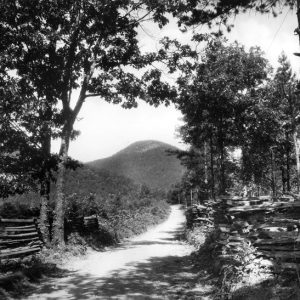 Eagle Mountain
Eagle Mountain 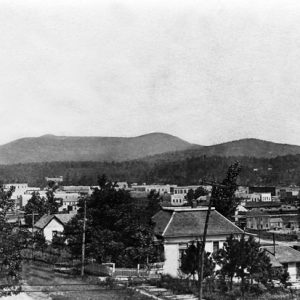 Mena
Mena 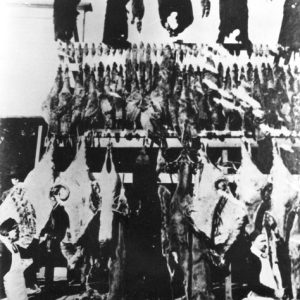 Mena Meat Market
Mena Meat Market 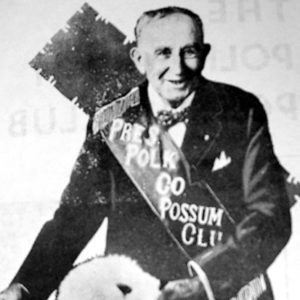 B. S. Petefish
B. S. Petefish 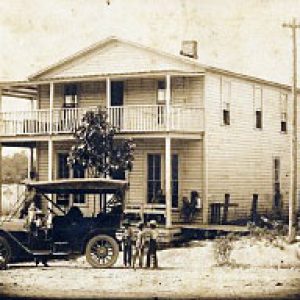 Pipes Hotel
Pipes Hotel 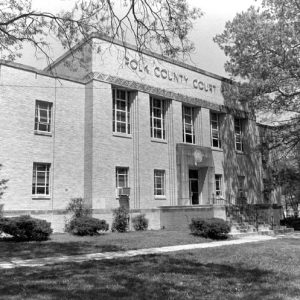 Polk County Courthouse
Polk County Courthouse  Polk County Map
Polk County Map 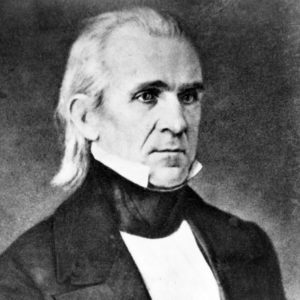 James Polk
James Polk  Queen Wilhelmina Lodge
Queen Wilhelmina Lodge 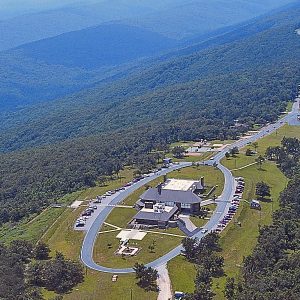 Queen Wilhelmina State Park
Queen Wilhelmina State Park  "Race War in Arkansas"
"Race War in Arkansas"  Dorothy Shaver
Dorothy Shaver  Sundown Town Flyer
Sundown Town Flyer  T. Texas Tyler Tree
T. Texas Tyler Tree  T. Texas Tyler
T. Texas Tyler 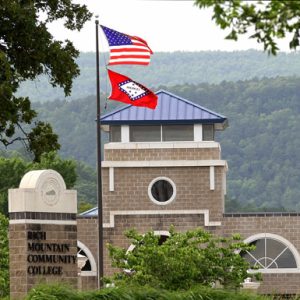 UA Rich Mountain
UA Rich Mountain 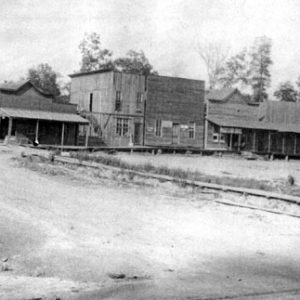 Vandervoort Street Scene
Vandervoort Street Scene 




Comments
No comments on this entry yet.